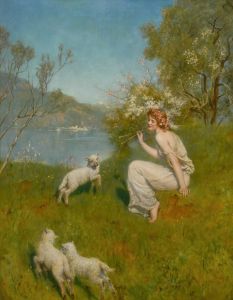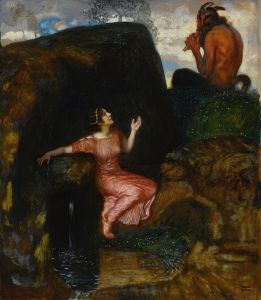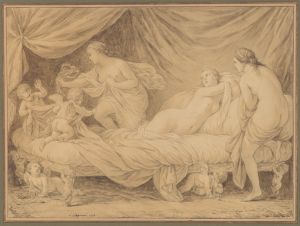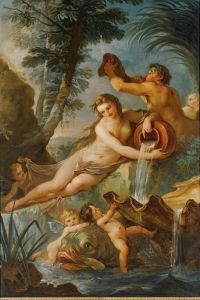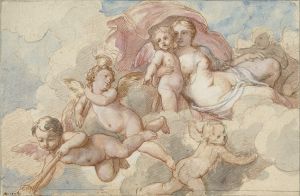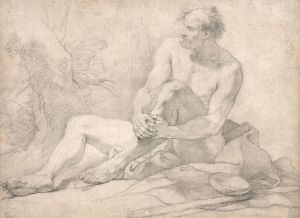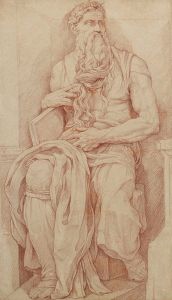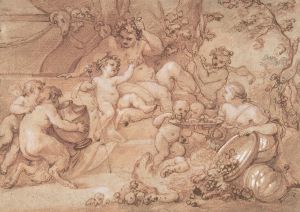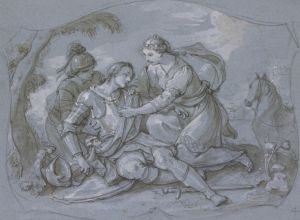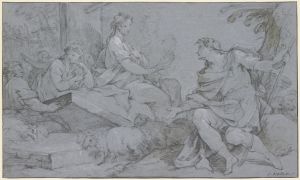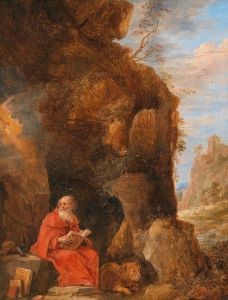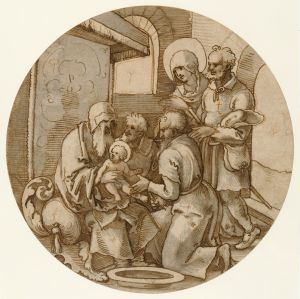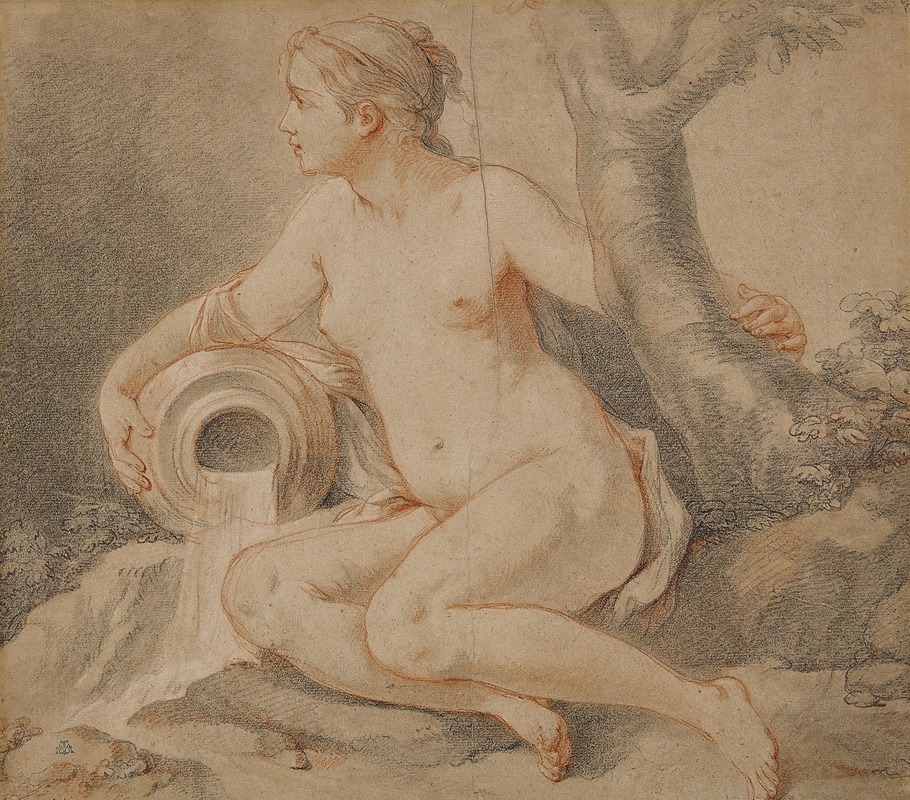
Étude de nymphe
A hand-painted replica of Charles-Joseph Natoire’s masterpiece Étude de nymphe, meticulously crafted by professional artists to capture the true essence of the original. Each piece is created with museum-quality canvas and rare mineral pigments, carefully painted by experienced artists with delicate brushstrokes and rich, layered colors to perfectly recreate the texture of the original artwork. Unlike machine-printed reproductions, this hand-painted version brings the painting to life, infused with the artist’s emotions and skill in every stroke. Whether for personal collection or home decoration, it instantly elevates the artistic atmosphere of any space.
Charles-Joseph Natoire's Étude de nymphe (Study of a Nymph) is a work by the French Rococo painter and draughtsman, known for his contributions to decorative arts, historical painting, and portraiture during the 18th century. Natoire (1700–1777) was a prominent artist of his time, celebrated for his refined style and mastery of the Rococo aesthetic, which emphasized elegance, lightness, and a playful use of color and form.
Étude de nymphe is a study drawing or painting that reflects Natoire's skill in depicting the human figure, particularly the idealized, graceful forms often associated with mythological or allegorical subjects. The work is believed to have been created as part of his preparatory studies for larger compositions or decorative projects. Such studies were common among artists of the period, serving as exercises to perfect anatomical accuracy, explore poses, and refine the overall composition before executing the final work.
Natoire trained at the prestigious Académie Royale de Peinture et de Sculpture in Paris and won the Prix de Rome in 1721, which allowed him to study in Italy. His time in Rome deeply influenced his artistic development, exposing him to classical antiquity and the works of Renaissance and Baroque masters. These influences are evident in his works, including Étude de nymphe, where the classical ideal of beauty and harmony is a central theme.
The subject of the nymph, a figure from Greek and Roman mythology, was a popular motif in Rococo art. Nymphs were often portrayed as youthful, ethereal beings associated with nature, embodying beauty and sensuality. In Étude de nymphe, Natoire likely sought to capture these qualities through his delicate rendering of the figure, emphasizing fluidity of movement and soft, naturalistic contours.
While the exact date of creation and the intended purpose of Étude de nymphe are not definitively documented, it aligns with Natoire's broader body of work, which frequently included mythological themes and decorative commissions. Natoire's career included significant projects such as the decoration of the Hôtel de Soubise in Paris and his role as director of the French Academy in Rome from 1751 to 1775.
Today, Étude de nymphe is appreciated as an example of Natoire's technical skill and his contribution to the Rococo movement. The work demonstrates his ability to blend classical influences with the lighthearted elegance characteristic of the Rococo style. It remains an important piece for understanding the artistic practices and cultural ideals of 18th-century France.





